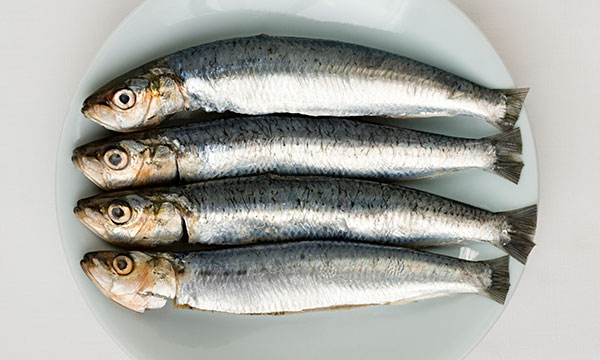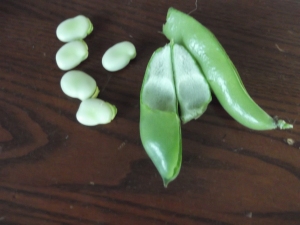
Charming sardines. Tried as I have, I still have not come across fresh ones. They’re always available canned, but I imagine the flavor is better when they are not. I do know you can get about 25 tons of them frozen on Alibaba.com, but I just don’t think I should do that.
Some of my friends know me as a sardine advocate. (And I’m not alone!)
Many more people are aware that sardines are weird. In high school, a couple of my friends gave me jalapeño-spiked canned sardines as a wacky birthday present, and we made a game out of eating at least a tiny bite of one for the camera. (Later, my dad casually ate the rest of the sardines, which we had been quite prepared to waste.)
However, in the last couple of years I became aware that salmon and tuna in particular are not faring well in the wild. Further, tuna carries relatively high mercury content, meaning it’s best to consume it in moderation (especially for pregnant women and small children).
Sardines, however, have a lot going for them. They are not endangered. They are a great source of omega-3 fats, vitamin D, calcium, and protein, and they are low in mercury. If prepared appropriately, I think they taste great! I will share a recipe once I have tweaked it to perfection 🙂
However, if sardines aren’t your thing, there are many other options of fish that are not endangered and that are nutritious. If we diversified our demand for types of fish, we might see a healthier ocean and healthier people. Commonly, miscellaneous fish are caught, killed and discarded as “bycatch” of trawling for the more popular shrimp (particularly in tropical regions, but it happens in American trawling too). This is wasteful.Give me those fish too!!!
So in general, a good way to honor ocean ecosystems is to choose a variety of foods, not just the ones we eat habitually. Think beyond shrimp, tuna and salmon. After all, there are plenty more fish in the sea.
Joel Salatin, the opinionated grass farmer I wrote about in my previous post, asks us to diversify when it comes to land animals too. He raises excellent chickens, cows, and pigs and is well-known for it in his region. Chipotle Mexican Grill approached Salatin as a potential supplier of organic meat for their restaurants, as they make an effort to source naturally raised and organic ingredients. After analyzing the opportunity, Salatin had to decline because even though his farm is extremely productive, he could not provide enough chicken and beef of the specific cuts of meat they serve. Particularly in fast food and restaurant food, consumers are looking for chicken breasts, wings and drumsticks. What about the rest of the bird? The same is true for cows, pigs, ducks, sheep and rabbits — some cuts of meat are much more popular than others, and we often ignore highly nutritious parts of the animal. (I’ll go into greater detail in a later post!)
Americans in particular are often uncomfortable with any meat that reminds them it was once an actual animal. We don’t want to see whole fish, organs, skin, or even bones really. But I would argue that we risk being both wasteful and ignorant if we limit our potential ingredients this way. A well-known chef whose book I neglected to mention in my earlier post, Fergus Henderson, is a leader in this line of thought. The chef of a renowned restaurant in the UK, St. John, Henderson is best known for his masterful preparation of the “odd bits.” These are the bits that make most of us uneasy — marrow, liver, offal, pigs ears, and onward — but from his reputation, I believe Henderson’s dishes would put our anxieties to rest. He draws on English tradition, from a day when cooks used the entire animal out of economic necessity and a greater knowledge of cooking in general. His book, The Whole Beast, offers recipes which honor the animal by wasting nothing that has the potential to shine.
This has been quite the carnivorous post so far, but there’s a vegetable-focused angle to this issue as well. Dan Barber, a prominent chef who advocates local, organic food sourcing, recently wrote an article about the importance of eating diverse vegetables, grains and legumes. It was published in the New York Times over the past weekend: What Farm-To-Table Got Wrong.

Some fava beans I grew in my first garden. These legumes fix nitrogen in the soil, or so I am told. This was nearly my whole crop… When I started out I scored A++ on enthusiasm for gardening but around a D- on actual knowledge.
In summary, as consumers we tend to buy certain foods far out of proportion to their healthy occurrence in nature. Trained by industrial monoculture, we take for granted our ability to pick a few favorite foods (jasmine rice, wheat, baby carrots, romaine, etc.) and stop there. Organic, biodynamic farmers work with an ecosystem to produce healthy crops without pesticides or synthetic fertilizers, and this means their land hosts a wide variety of species (a common characteristic of a healthy natural place). In this article, Barber describes the careful process necessary to grow excellent wheat of a traditional variety. The farmer featured in the article, Klaas, appears very knowledgeable and committed to this task, planting a wide variety of crops to nourish the soil so that he can grow a good crop of wheat. As there is less demand for the perfectly enjoyable but less popular crops he grows to support his wheat production — mustard, cowpeas, millet, barley, kidney beans, and brassicas — Klaas must sell most of these less preferred legumes and grains as animal feed for little profit.
Barber points out that, for all our commitments to support local, organic farms by buying their produce, we withhold valuable help by limiting our palates to the best-known foods. Even though we’re choosing to be more adventurous by looking for heirloom, organic, local varieties of the foods we love, we don’t make dietary staples of the mustard greens, cowpeas, barley and other key prerequisites for the bread we love so much. But if we can open ourselves up to those possibilities, we will see more organic and local food available at a lower price and in greater quantities, all while supporting the artisans of the field who made it possible.
And that’s why I say, eat weirder stuff.